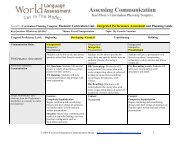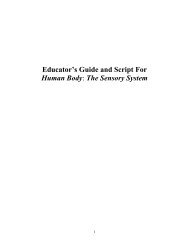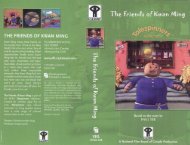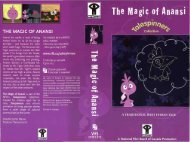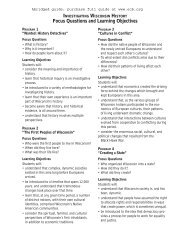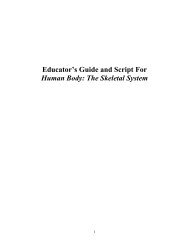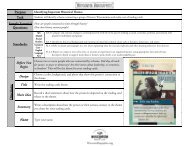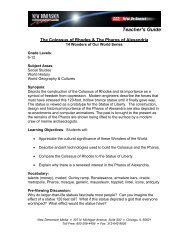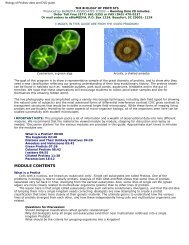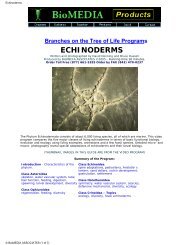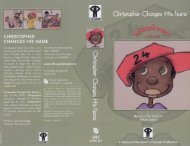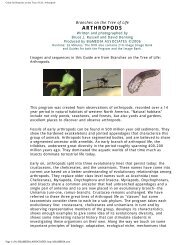Elements, Compounds, Mixtures
Elements, Compounds, Mixtures
Elements, Compounds, Mixtures
Create successful ePaper yourself
Turn your PDF publications into a flip-book with our unique Google optimized e-Paper software.
<strong>Elements</strong>, <strong>Compounds</strong>, and <strong>Mixtures</strong><br />
Student Learning<br />
Objectives<br />
Upon viewing the video and completing the enclosed student activities,<br />
students will be able to do the following:<br />
• Describe an atom as the smallest possible piece of a pure substance that still has<br />
the properties of that substance.<br />
• Cite the definition of the term “element” and provide several examples of elements.<br />
• Explain the importance of compounds, and generally describe how compounds<br />
are formed when two or more elements chemically combine.<br />
• Create a diagram of a water molecule, consisting of two hydrogen atoms and one<br />
oxygen atom.<br />
• Describe the characteristics of mixtures, and provide an example of a common<br />
mixture.<br />
• Differentiate between a homogeneous mixture and a heterogenous mixture. Cite<br />
an example of each of these mixtures.<br />
• Explain the characteristics of a colloid, and provide an example of a colloid.<br />
• Describe the characteristics of a suspension, and provide an example of a<br />
suspension.<br />
• Define a solution as a type of homogeneous mixture in which the components are<br />
evenly mixed.<br />
• Differentiate between the solute and the solvent in a solution.<br />
• Describe some of the factors which affect the rate of solubility of a solute in a<br />
solvent.<br />
7<br />
www.visuallearningco.com<br />
1-800-453-8481<br />
Visual Learning Company



